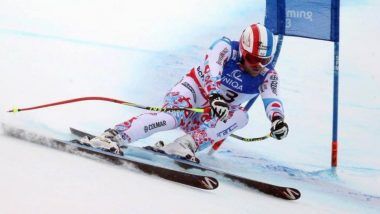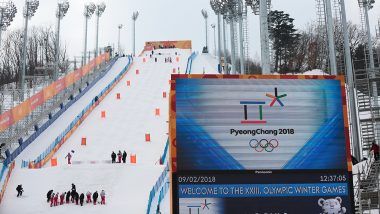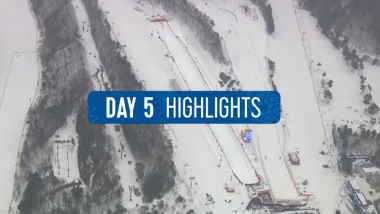Pyeongchang (South Korea), February 6: Elite down hill racers will strap on their skis at the Pyeongchang Winter Olympics aware of the risks but sometimes in denial about the real dangers despite two deaths in the run-up to the Games. German teenager Max Burkhart and France's two-time Olympian David Poisson both died in racing incidents in Canada, the first fatalities on the professional circuit since 2001, casting a dark shadow over the sport.
"We know we do a risky sport," said Poisson's teammate Blaise Giezendanner. "You accept wrecking a knee, you accept sliding into the nets. Injuries are part of the game. But the game is not about dying. At no moment do we down hillers say to ourselves' this morning, I'll maybe die." That said, there is an element of denial among the elite racers given the taxing nature of a sport that combines sheer speed with technical prowess.
Dressed in a skin-tight catsuit, back support and helmet, be goggled racers shot through course falls, snakes and rolls, on a wide variety of terrain, in parts propelling them 60 metres in the air, only to slam down for icy traverses that severely test technical ability and mastery of well-honed equipment.
Norwegian Kjetil Jansrud, who won super-G gold and downhill bronze in Sochi and giant slalom silver in 2010, said, "You have to compartmentalise things, and it's tough. "We talk about it, we know that sport has a lot of risks, but we forget our sport is a dangerous one. "When you crash, you can hurt yourself -a knee, an elbow- but this (death) is difficult to accept." Jansrud added, "I've tried not to think too much about it because that bring fears, a lot of nerves, I'll try to keep that away so that I don't make any mistakes myself."
Luc Alphand, France's 1997 world downhill champion an erstwhile Dakar Rally driver, confirmed that "the word 'fear'is taboo in our sport". "However, every skier has periods when he's less physically in form and when he feels fear," Alphand said. "It's up to the skier to manage those periods, it's up to him to look after himself, it's a massive mental task."
- Risk management key -
Mental issues to one side, Bernhard Russi, who won a gold and silver for Switzerland in the Olympic downhills in 1972 and 1976, insists there is also the physical side of risk management: that is, ski racers knowing just how far they are willing to push themselves. "99 times out of 100, racers will say 'no, I'm not scared. I have respect for the mountain'," Russi, the designer of Olympic downhill courses for the International Ski Federation since 1980, told AFP. "Once they stop, they'll remember moments when they were scared. But they'd never admit to that today, they have to protect themselves. "I never admitted to being scared, but today I know there were two or three moment when I was scared of dying." Russi added: "In skiing, and downhill in particular, there is a permanent risk. We all put on a helmet when we go skiing. That means that we take a risk.
"A ski racer's risk management is the same as a Formula One driver's. If the latter goes full tilt into a chicane and he crashes, he cannot complain, it's his fault. If a ski racer doesn't open up his body before a jump (to slow himself down) it's not the jump's fault but his alone. At the end of the day, it's a choice to take the risk or not. We'll never be in a situation of 'there's no more danger'."
Markus Waldner, men's chief race director for FIS, admitted that the racers had been affected by the deaths, but said the show had to go on, with everyone aware of the inherent risks that is part and parcel of a day's work. "Some guys will retire after the season, some will not perform this winter because they cannot go to their limit," Waldner said.
"Then they'll stop because they are not able anymore to push so far, to be competitive. If you are not 100 percent ready to push yourself to the limit, you are not competitive. You do it once, twice... you feel 'I cannot push myself anymore' because something is broken."













 Quickly
Quickly




















